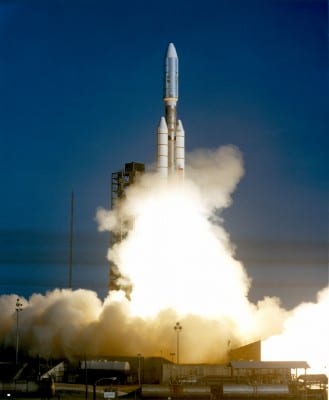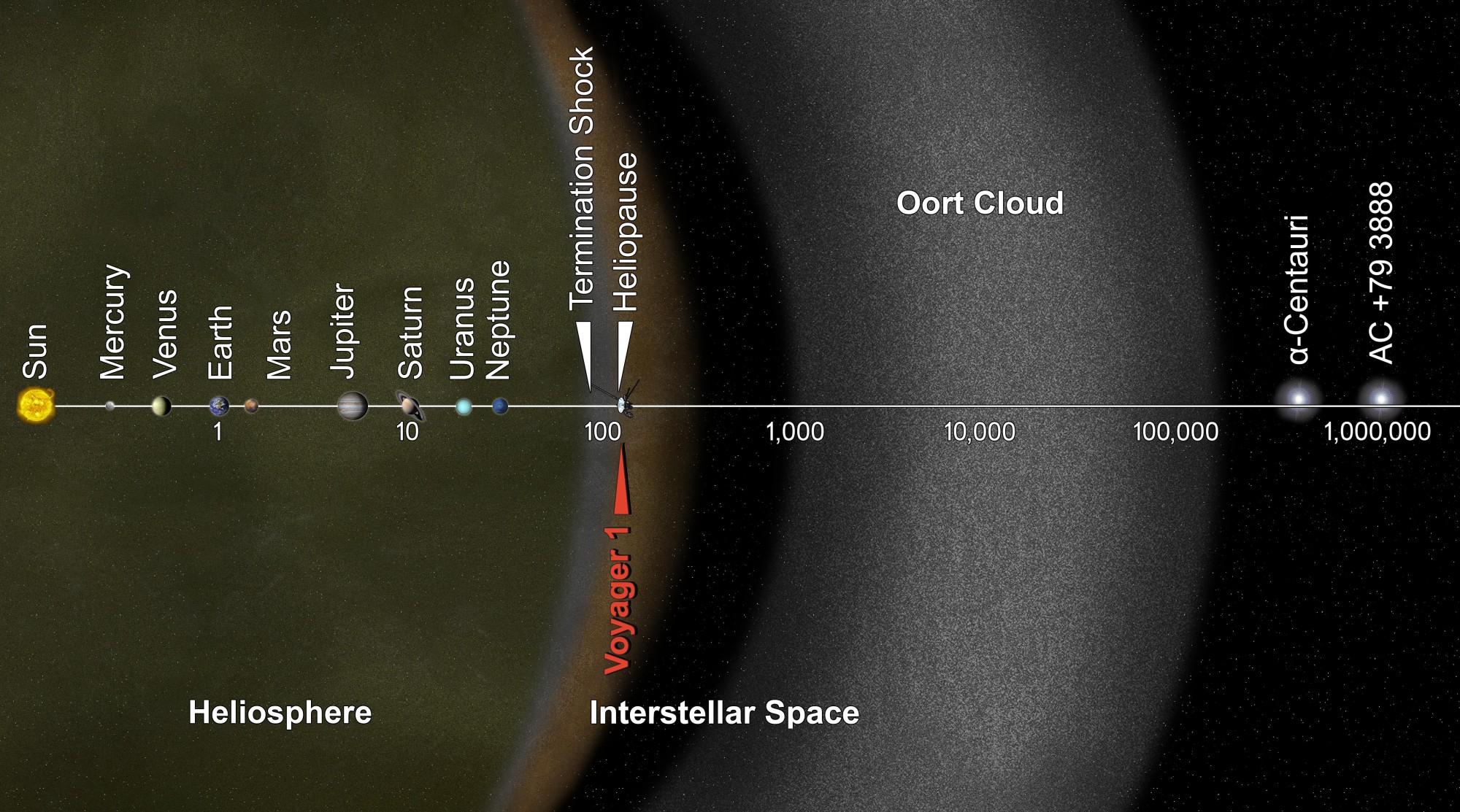 In late 2013, the National Aeronautics and Space Administration (NASA) and the Jet Propulsion Laboratory (JPL) tentatively announced that space probe Voyager 1 had entered interstellar space in 2012. Although not beyond the effect of our Sun and therefore not outside of the Solar System, interstellar space is an ocean of plasma, which is comprised of charged particles. While it hasn’t left the Solar System, Voyager 1 has flown about 11 billion miles from Earth since its launch.
In late 2013, the National Aeronautics and Space Administration (NASA) and the Jet Propulsion Laboratory (JPL) tentatively announced that space probe Voyager 1 had entered interstellar space in 2012. Although not beyond the effect of our Sun and therefore not outside of the Solar System, interstellar space is an ocean of plasma, which is comprised of charged particles. While it hasn’t left the Solar System, Voyager 1 has flown about 11 billion miles from Earth since its launch.
Launched on September 5, 1977 atop a Titan IIIE rocket, it has taken the 733 kg spacecraft over 35 Earth years to reach this new frontier of dense, silent space. Details from NASA and JPL, the latter of which is managed by the California Technical Institute, were released on July 7, 2014 describing further supporting proof that the spacecraft did, indeed, left the heliopause in 2012. There are now three separate confirmed occurrences of an identical signal picked up by Voyager 1 that, when analyzed, indicate that each respective signal was received at a different distance past the heliosphere.
So who, or what, sent that signal into the deep reaches of our Solar System? The culprit in this case is the Sun. When massive bursts of plasma and magnetic fields, called coronal mass ejections (CMEs), are released from the surface of the Sun into space, these super-heated tentacles of gas travel outward from the Sun at an average speed of 489 kilometers per second. It should be noted that this deadly mixture of gas can reach speeds as high as 3,200 km/s.
The density of the plasma of a CME is much different than the density of the plasma in interstellar space. Once the plasma of each of the three CMEs hit the heliospehere around the spacecraft, Voyager 1 detected the dramatic shift in density and sent data back to JPL for analysis. Research indicated that the density of the waves disturbing the thick plasma ocean matched the density of CMEs launched into space by our Sun. Further analysis matched the vibrations with the launch of each of these CMEs from the Sun.
So, where’s the next stop for Voyager 1? The Oort Cloud, named after Dutch astronomer Jan Oort, is next on the list, the origin place of the famed comet Hale-Bopp. It will take Voyager I about 300 years to reach the thick mess of icy comets, asteroids, and debris, and 30,000 years to pass through it.
Voyager 1 still has a long way to go before it finally leaves the Solar System, but we have high hopes for the little probe. Even though its generators only have about enough juice to power it until 2025, Voyager 1 will continue to fly toward the edge of the Solar System, capturing minds and spurring dreams of interstellar travel for mankind.
[button link=”http://www.cnet.com/news/nasas-voyager-hit-by-third-solar-tsunami/” icon=”fa-external-link” side=”left” target=”blank” color=”285b5e” textcolor=”ffffff”]Source: CNET[/button][button link=”http://www.jpl.nasa.gov/news/news.php?release=2014-221″ icon=”fa-external-link” side=”left” target=”blank” color=”285b5e” textcolor=”ffffff”]Source: NASA[/button]Image Sources: Wikipedia
Last Updated on November 27, 2018.











